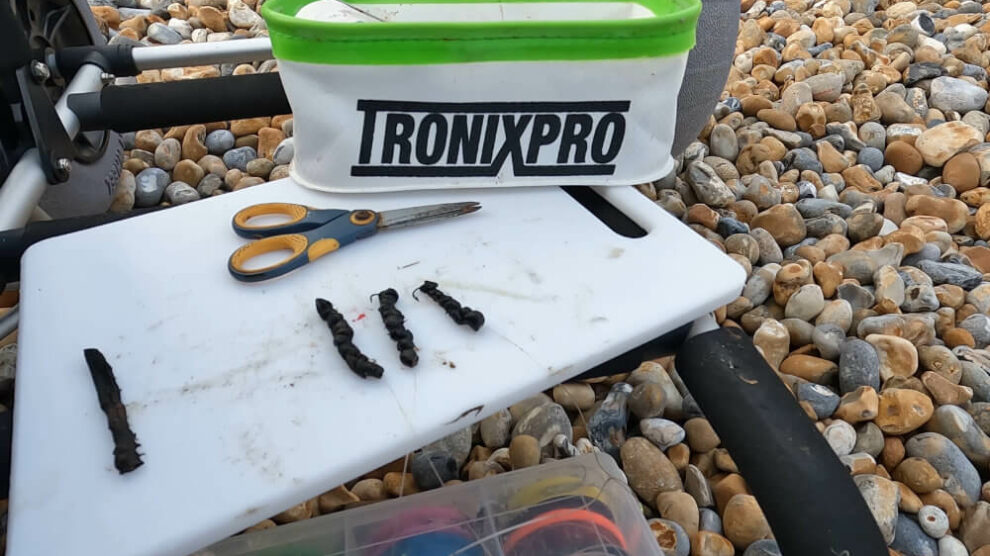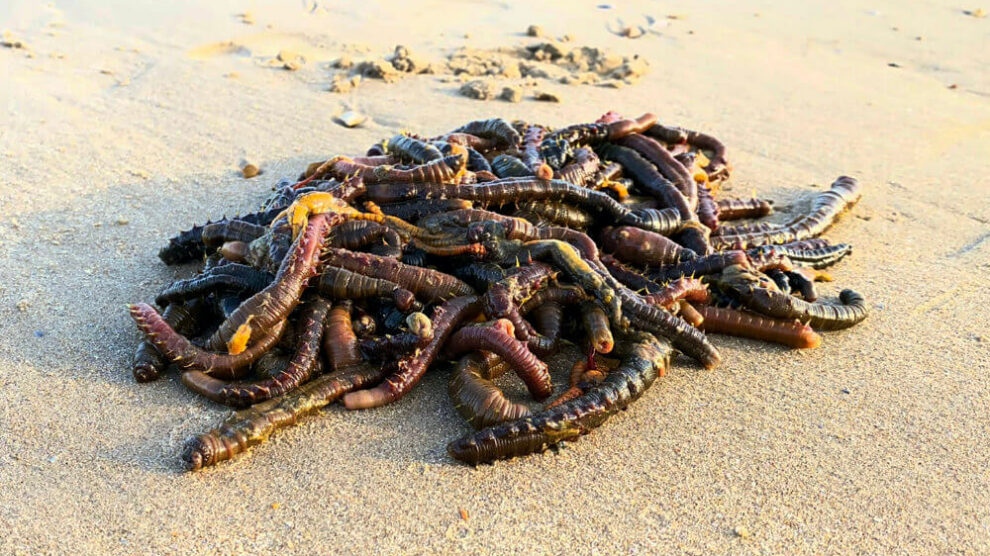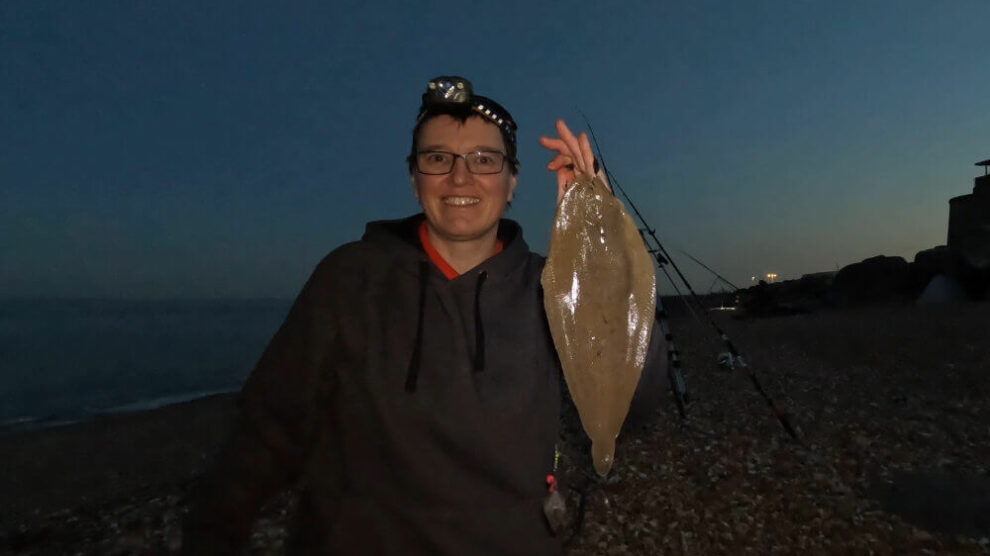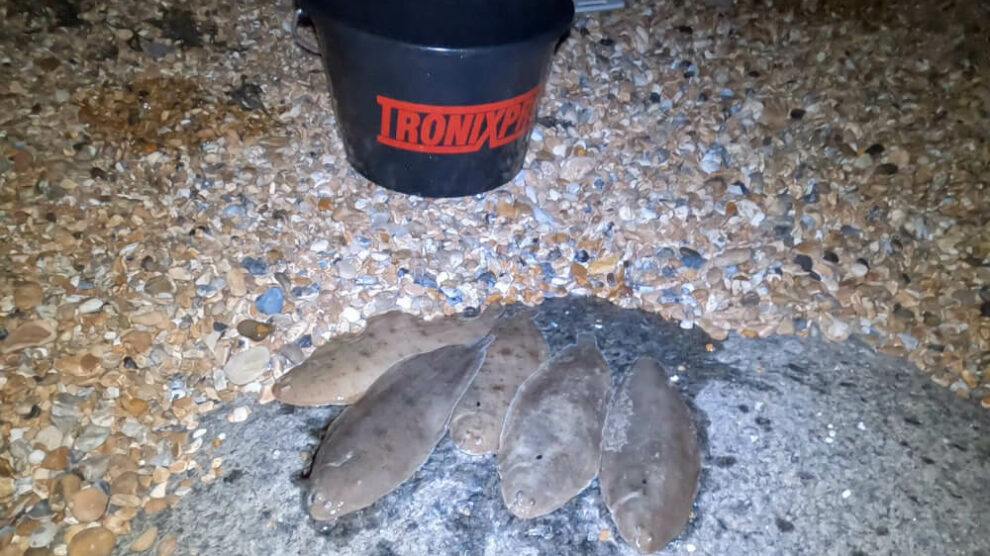Heading out for a summer evening to target sole always brings back memories of summers past: delightfully warm, t-shirt and shorts nights, sitting patiently waiting for the tide to start flooding, setting up my rods in soon-to-be fading light. My sole fishing sessions so far this year have been similar to this, though not all of them quite so warm: my rose-tinted glasses have clearly impacted my memories of times past!
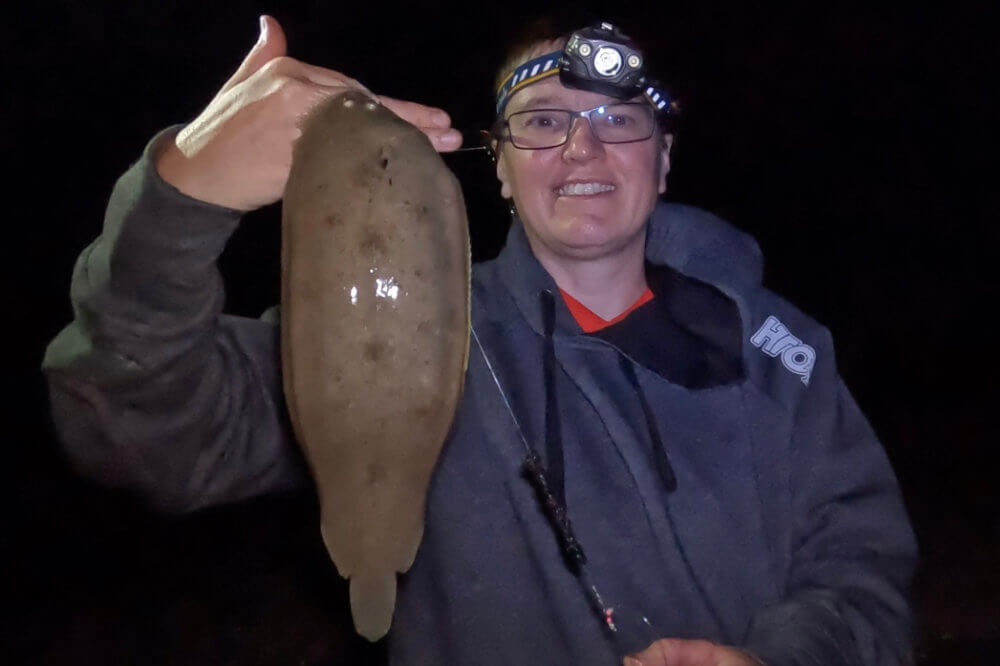
Now, anyone who read my blog on targeting golden grey mullet will know that I sometimes like to travel light. However, for my evening sole fishing sessions, I accept that carrying extra tackle – perhaps most notably a shelter – is, for me at least, a necessary part of a sole session. My beach shelter serves three purposes: providing shelter from any wind or rain (yes, yes, I have to accept that not all summer nights are warm despite what my memories tell me!), keeping my dinner and bait away from many resident foxes out on the prowl looking for an easy meal, and a semi-enclosed space to bait up the hooks.
Thankfully the Tronixpro Beach Trolley helps make moving all the kit to the beach an easier task than it otherwise would be. For me, being quite small in stature, the trolley is a really essential bit of kit when I need to take my seat box, rod bag and shelter.
Stealth Mode
I believe that, particularly at low tide or in shallow water, shining lights into the spots where fish are feeding may spook them. Many of my evening sole sessions start around low tide when the water is particularly shallow. So, by sorting out my bait inside the shelter my headlamp beam is less likely to shine on the water. Notably, I like to cast one rod in really close, sometimes only 15 or 20 yards from the shore when the tide starts to flood. Given this, I might set up camp half way up to the high tide line, or even at the high tide line depending on the beach and how long I plan to stay out, to put a good amount of space between my lights, and any noise I make, and the sea. To further reduce the time spent shining lights towards the sea, I also attach a dedicated light to my tripod, lighting up the rod tips and pointing up the beach towards the high tide line. This means I don’t need to keep my headlamp on, avoiding the risk of accidentally shining the light on the water.
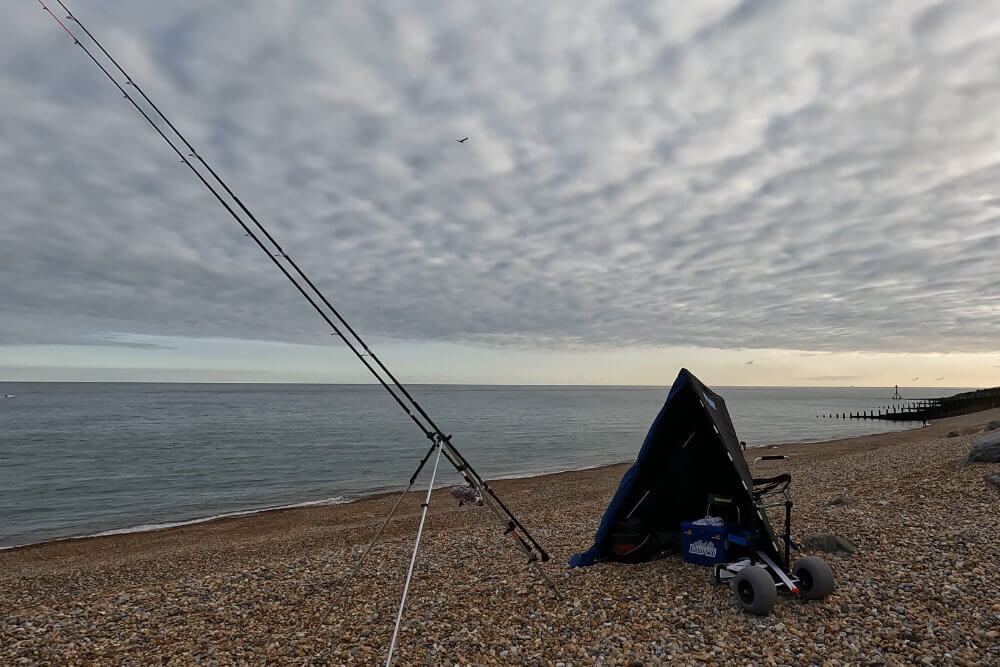
Venues and Rigs
The beaches I fish for sole typically have sand at the bottom of a shingle bank, but where the sand is only exposed on the bigger tides. Whilst other beaches do produce sole, I favour fishing Hove or Eastbourne and rarely choose a different venue for my sole fishing sessions. My terminal tackle includes three standard rig choices: a two hook loop rig, a three hook flapper, and a three hook clipped down rig. Occasionally I might use an URFE rig, with three hooks and around 3.5 meters in length, if bites are hard to entice.
There are some common components needed to make these three types of rigs. For the main body, I prefer to use 60lb or 70lb Tronixpro Xenon Leader. The snoods can be made with 0.4 Blackout line. The top of the rig can comprise a size 1 rolling swivel, with size 8s for attaching the snoods to the rig body, although cascade swivels are needed for the middle and bottom snood on the three hook clipped down rig, along with a rig spring at the top for tensioning. To hold the swivels in place, a few beads are needed and some Tronixpro Rig Gum. The rig gum is really great on clipped rigs: if a snood changes length when a hook is replaced then it is easy to move the swivels on the rig body to new locations. The hooks I use for sole are size 4 or, more typically, size 6 T31 Fine Surf hooks.
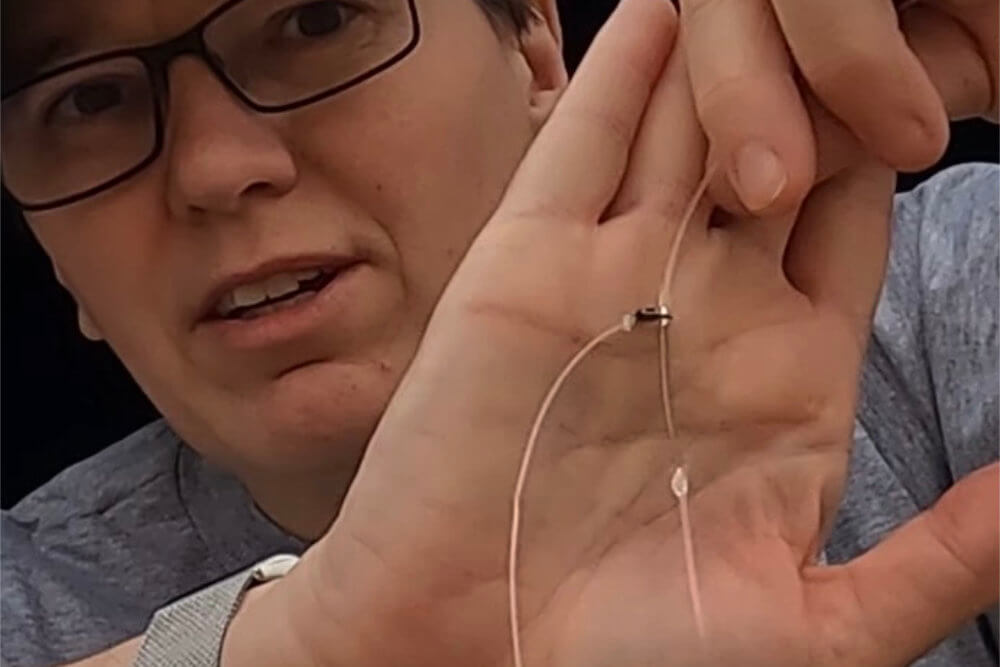
The flapper rigs have snoods between eight and ten inches long, with slightly longer snoods on the loop rig. If, like me, you find yourself needing to replace hooks on the beach, such as when one gets bent, then starting off with a 10 inch snood gives a bit of ‘extra’ line for tying on one or two new hooks before the snood becomes too short. Personally, I don’t go below eight inch snoods when fishing for flatties, particularly when plaice or flounders are about for which I like to use the ‘through the gills’ unhooking method: I find this difficult with really short snoods. This is definitely a method worth mastering, as the hooks come out much more cleanly resulting in less damage to the fish. This fits with my sustainable approach to fishing, taking only fish suitable for the table and returning all others in as healthy condition as possible.
A Typical Sole Session
When planning my sole fishing sessions, I favour overcast weather rather than clear skies and try to pick high tides around midnight or so. This gives me a reasonable amount of time fishing in darkness without having to drive home feeling too sleepy. My younger self could have managed an all-nighter and safely driven home afterwards, but those days are long gone! I’ll arrive at the beach maybe an hour or so before low tide, to provide ample time to get set up before the flood begins. My first casts are often timed to coincide with low tide when sole may come in over the newly submerged sand seeking out their dinner.
I nearly always choose to fish two rods alongside each other (check out our blog on Two Rod Fishing Tips here – Ed), to enable me to try a greater range of tactics, increasing my chances of success. I’ll start off fishing at different ranges on the two rods, and rotate through my three standard rig choices on subsequent casts. This ensures that each rig type gets attached to each rod, fished at different distances, early on in my session. Once I find out which rig and which distance is working well on that day, I can narrow down my tactics and stop using the less effective rigs. Similar ‘switching’ tactics are sometimes employed with bait as well, but mostly my sole sessions stick to using small pieces of fresh black lug tipped with dug maddies. If I’ve not had time to dig maddies, or pump lug, then I’ll just use frozen lug whipped on with fine Tronixpro Baitex. This fine latex is really strong for its super-thin diameter, making it very hard to see when whipped around a lugworm. It works well with frozen worms that can be quite limp, and I’ll put an extra wrap or two of Baitex just above the eye of the hook for extra bait security.
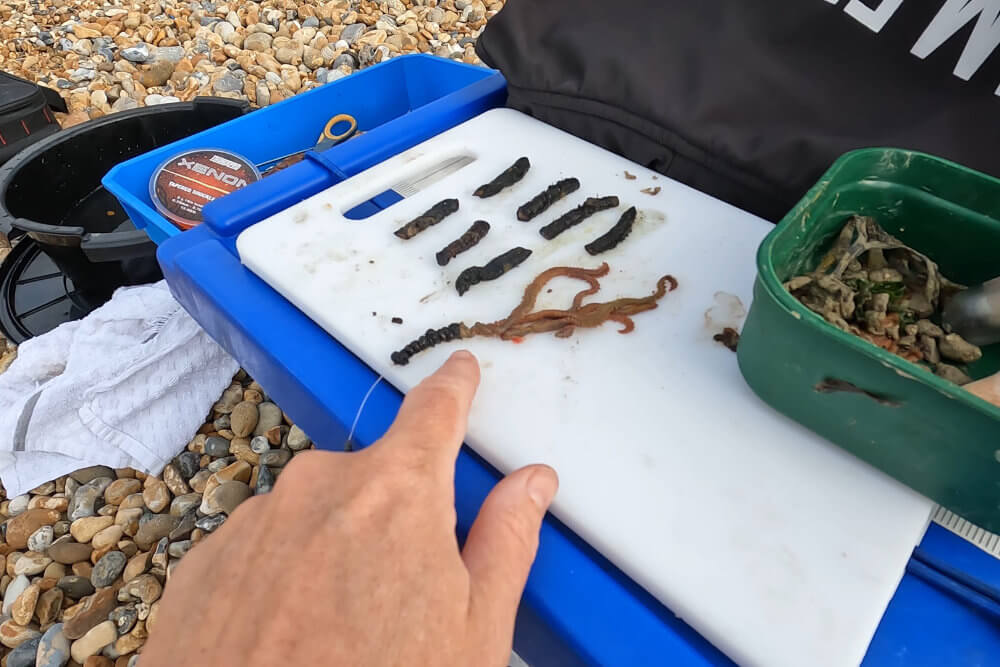
This year my approach have also included different rod choices, and it’s been an eye-opening experience! In the past, I’ve preferred to use a matching pair of rods for all of my fishing, but this summer has seen me switch tactics. I’ve taken a standard beach caster and used that alongside the Tronixpro Banzai Multi Tip. Once I’ve refined my rig choices and determined the right distances to cast, both rods are fishing the same bait and rigs at similar distances. What has really stood out this year is that I’ve caught nearly all my sole – and other fish, when targeting other species – on the Banzai Multi Tip. My estimate is that this superb rod has out-fished my other rod by about eight fish to two, once I switch to using similar tactics on both rods. The difference really has been huge.
My conjecture is that this marked success rate is due to the sensitive tip on the Banzai Multi Tip. Firstly, it has outstanding bite detection. Even tiny flatties manage to pull down on the rod tip significantly, indicating an obvious bite. Larger fish lead to adrenalin-inducing pull-downs on the rod tip, causing your heart race. Sole can be vicious hunters, making their bites even more pronounced on the sensitive tip. Secondly, I think the softer tip provides less resistance to the fish, leading to more hook-ups: the fish don’t get spooked when attacking the bait and more readily engulf the hook. If you’re thinking about getting a Banzai Multi Tip, I don’t think you’ll be disappointed using it for sole sessions on a still summer’s evening, or when targeting the many other species for which it is suitable. My sole sessions this summer have really made me fall in love with this rod and I am now have a matching pair. They are going to be part of my armoury for many seasons to come.


